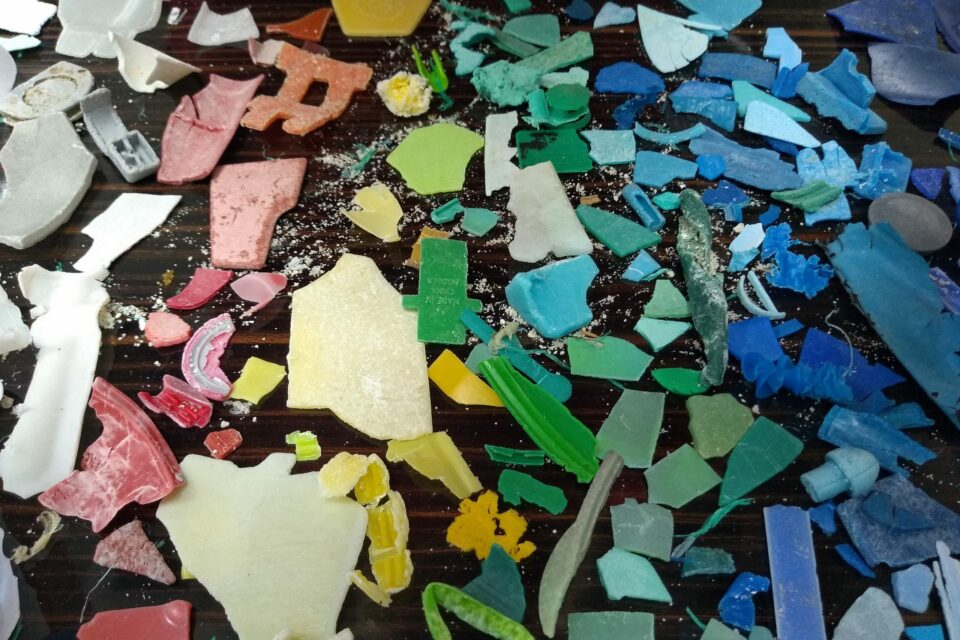

How will El Niño affect the Galapagos Islands?
El Niño events impact all areas of Galapagos in both the terrestrial and marine environments, leading to considerable impacts on the Islands’ species.
From the hot and humid environment of the tropics to below-zero conditions at the poles, climate patterns significantly impact us and our ecosystems.
One such climate pattern is El Niño which occurs in the Pacific Ocean every two to seven years. Defined as the “warm phase” of the much larger climate pattern known as the El Niño-Southern Oscillation (ENSO), which includes a “cool phase” called La Niña, El Niño influences our ocean temperature and currents, which in turn impacts the health of many species.
To understand the impact of El Niño on our environment, we need to know what conditions are like during non-El Niño years. During a typical year, warm trade winds blow across the tropical Pacific, pushing warm surface water towards the Western Pacific region and to countries including Australia and Fiji. The westward movement of warmer water and winds causes cooler, nutrient-rich water to rise from the deep in the Eastern Tropical Pacific along the coasts of Ecuador, Chile and Peru in a process known as upwelling. The nutrient-rich water brought to the surface by upwelling provides an abundance of food for marine species, making these waters some of the world’s most biodiverse and ecologically important.
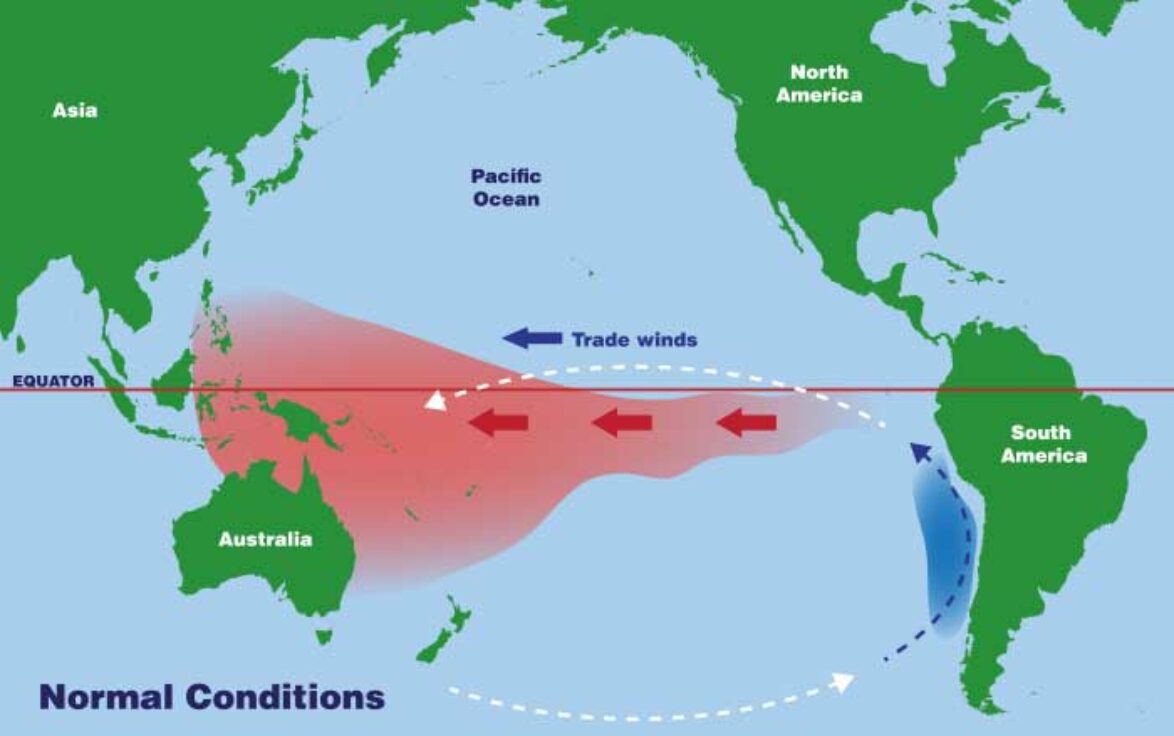
El Niño and its impact in the Western Pacific
During an El Niño event, the warm trade winds that normally blow towards the Western Pacific region weaken and sometimes switch direction, travelling east towards South America. This change brings decreased rainfall and rising temperatures, leading to heatwaves, droughts and even bushfires across countries including Indonesia and Australia.
El Niño and its impact in the Eastern Tropical Pacific
In the Eastern Tropical Pacific, changes in air pressure cause the warm trade winds that initiate the upwelling process to weaken, resulting in warm water moving eastwards towards South America. These warm waters prevent the upwelling of the cold, nutrient-rich waters that many marine species depend on, resulting in many ocean species dying or migrating. This, in turn, adversely impacts fisheries and communities that rely on fishing as their primary source of income. During the 1982-1983 El Niño event, it is estimated that Pacific coast fisheries suffered a $290 million loss due to a depletion in fish populations.
El Niño also has an impact on land, causing increased rainfall, particularly in Ecuador and northern Peru. While these changes in rainfall benefit some vegetation, many species suffer from food shortages and decreased nutrient availability.
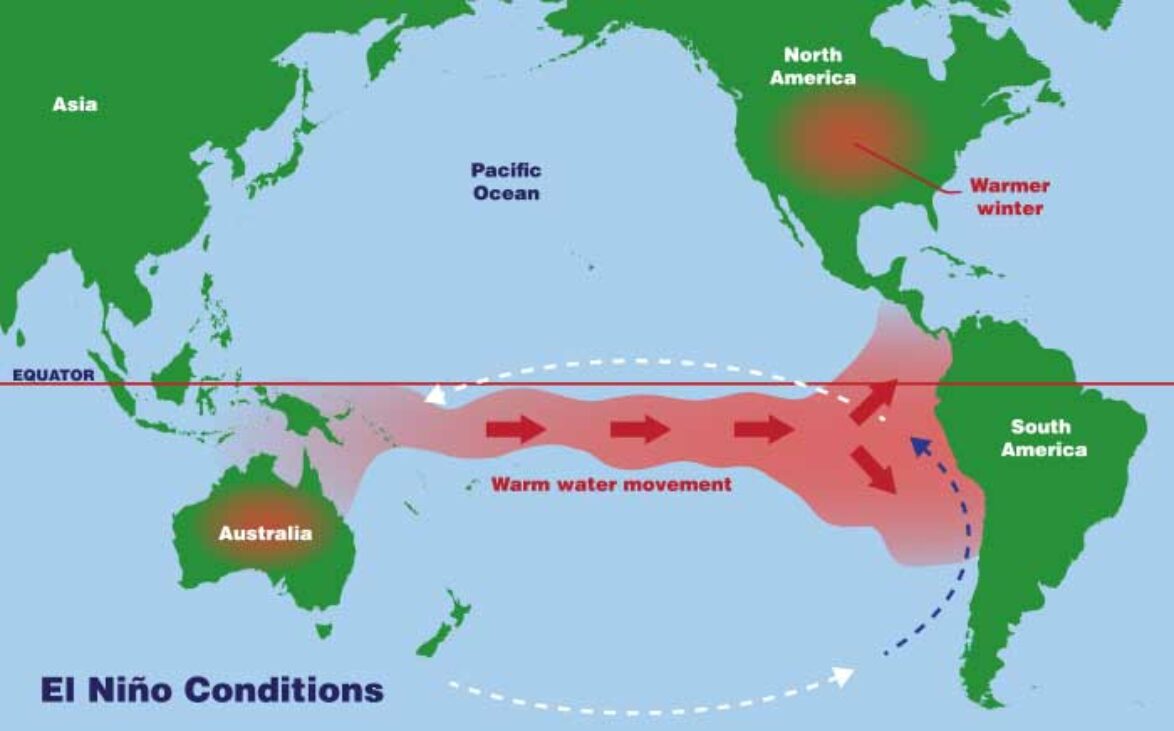
From the hot and humid environment of the tropics to below-zero conditions at the poles, climate patterns significantly impact us and our ecosystems.
El Niño and the Galapagos Islands
El Niño events impact all areas of Galapagos in both the terrestrial and marine environments, leading to considerable impacts on the Islands’ species. On land, the increased rainfall transforms arid landscapes into vast areas of greenery. For the land iguana, this transformation brings an abundance of food in the form of cactus plants, which become too heavy from the excess water stored and collapse to the ground. Often Darwin’s finches also have extra breeding success due to increased food availability. Unfortunately however, these conditions also favour increased breeding in invasive species such as goats and rats, which puts increased pressure on the endemic species on the Islands.
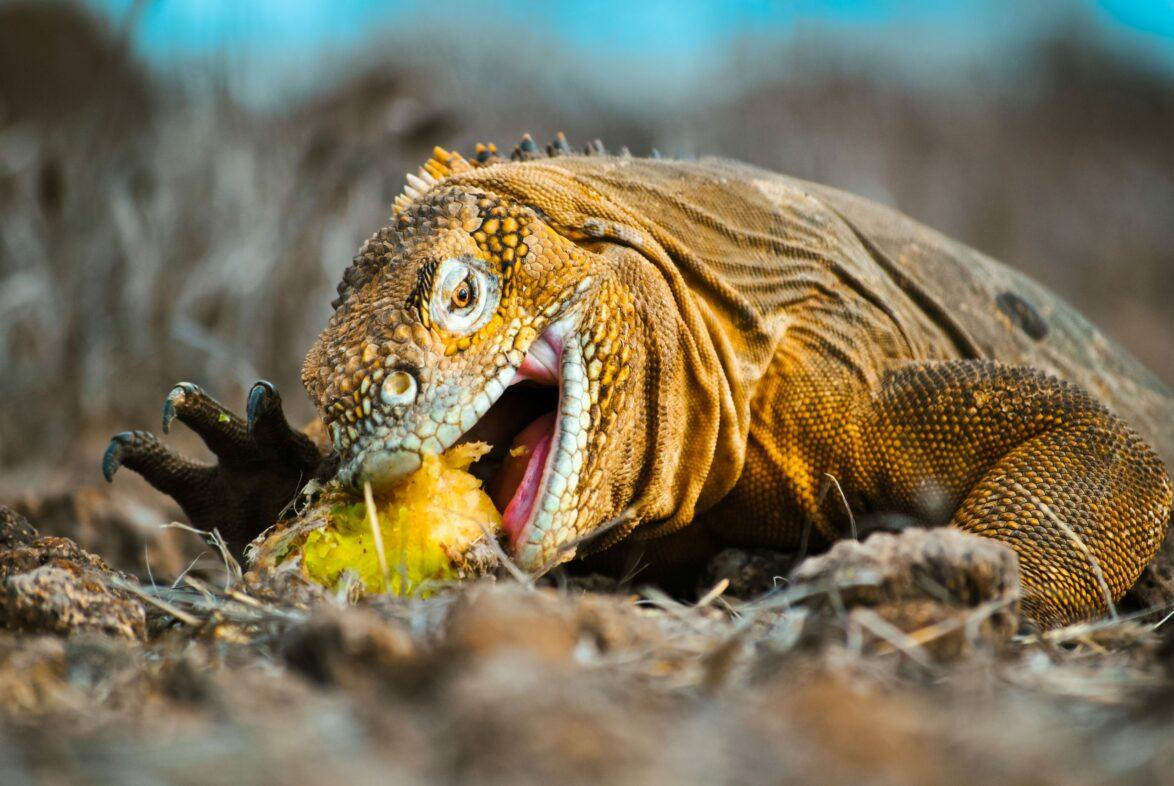
During the 1982-1983 El Niño event, it is estimated that Pacific coast fisheries suffered a $290 million loss due to a depletion in fish populations.
In the ocean, warmer waters can spell disaster for many marine species dependent on the colder currents. During El Niño years, cold-water schools of fish, which Galapagos penguins feed on, migrate away. As a result, during El Niño years, Galapagos penguins do not breed due to the increased chances of infant mortality and even death of the parents.
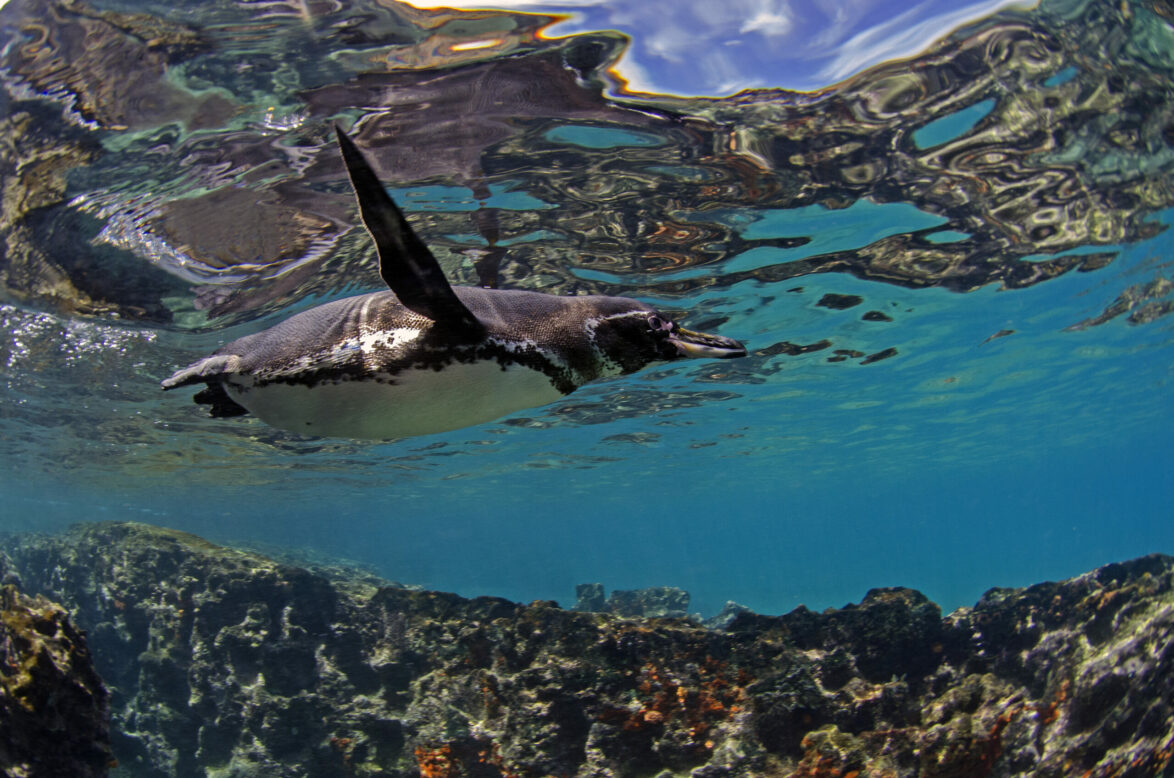
Strong El Niño events cause high mortality rates in marine iguanas; as many as 70% of the population were lost in the 1982-83 El Niño event. This is caused by a decline in their primary food source, algae. However, the marine iguana has developed some unique adaptations to try and cope with these changes.
To overcome the decline in food during El Niño events, marine iguanas become thinner and shorter, with their skeletal structure and snout shrinking in size – one of the only known species able to change the size of their skeleton! Individuals have been documented as reducing in size by up to 20% only to re-grow when an abundant supply of food returns.
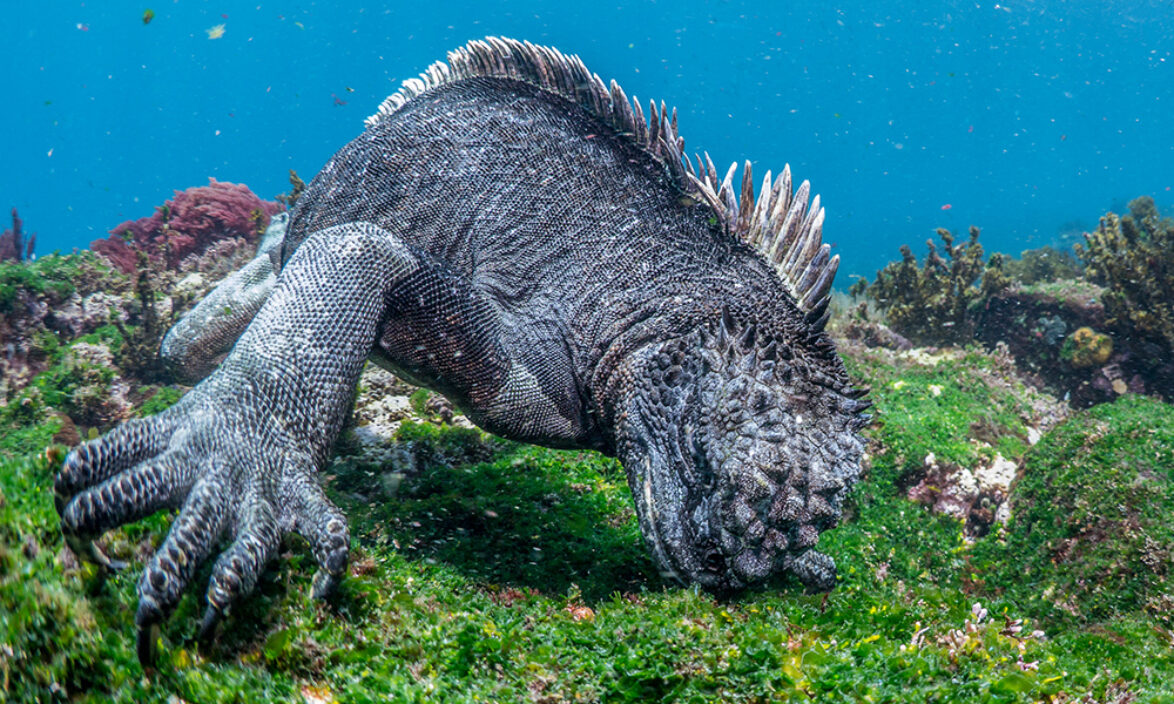
How is GCT helping?
From grassroots to governments, we are working with a range of project partners to ensure a safe future for the thousands of species that call Galapagos home.
While there is nothing we can do to stop El Niño events from occurring, GCT is doing plenty to help minimise other controllable threats, some of which are influenced by El Niño, including the increased abundance of invasive species.
Supported by GCT, the Saving the Mangrove Finch Project is focussed on protecting the Critically Endangered mangrove finch from introduced black rats and the invasive parasitic avian vampire fly (Philornis downsi), which prey on eggs and young chicks. On Floreana, we are supporting one of the largest and most complex eradication projects ever conducted on an inhabited tropical island, with the ultimate aim of reintroducing locally extinct species that have been driven from the island by invasive species.
By eradicating the threat of plastic through our Plastic Pollution Free Galapagos programme and supporting the implementation and monitoring of Marine Protected Areas and sustainable fishing practices, we can increase the resilience of our ocean and its inhabitants to help mitigate the impacts of El Niño events.
El Niño watch
According to the World Meteorological Organization, 2023 marks the beginning of a new El Niño event, with scientists predicting extreme weather events and soaring temperatures that could surpass those experienced during the last major El Niño in 2015-6. Sadly, some climate models warn that we can expect more frequent and intense El Niño events in the future due to climate change and rising global temperatures.
While it is impossible to know the exact long-term effects of this El Niño on the Galapagos Islands and the thousands of species that call it home, we can expect a significant impact on the delicate balance of nature in the Archipelago.
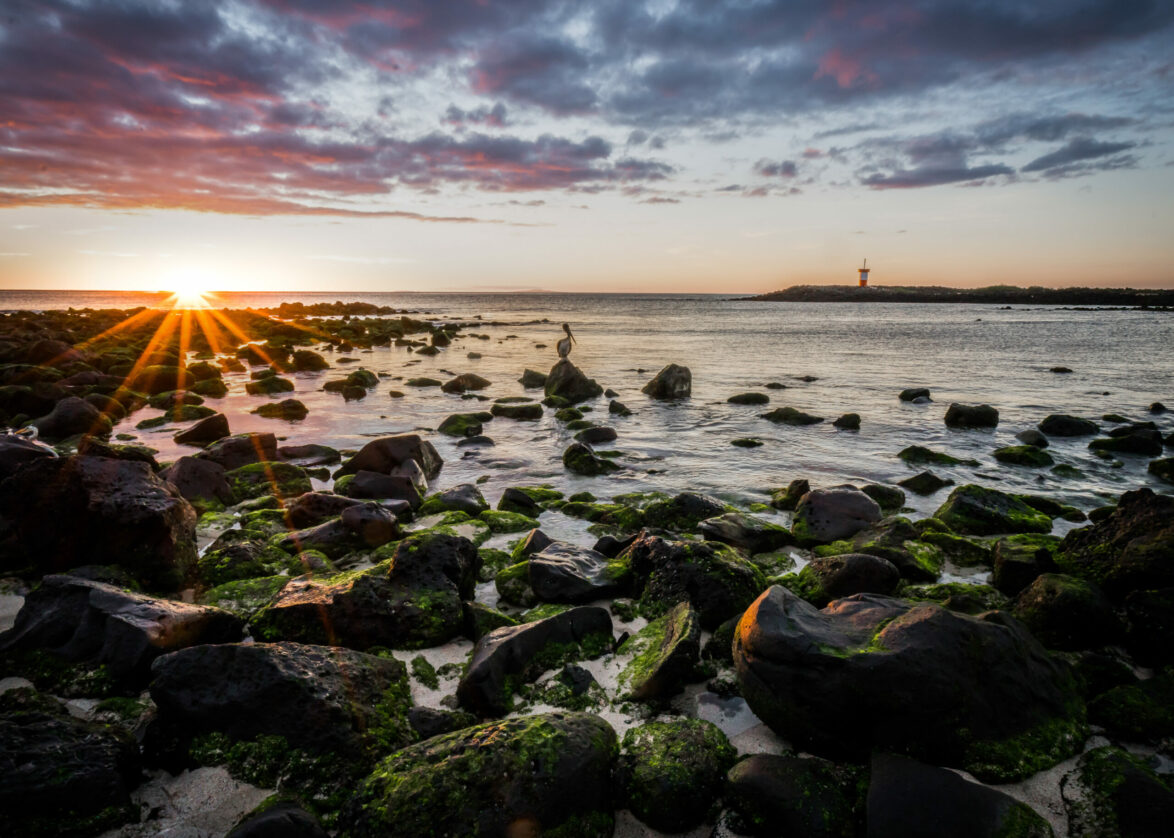
How you can help
Help us protect one of the most unique and ecologically important places on earth by donating, adopting a Galapagos animal, or becoming a member of GCT.
70 %
of marine iguanas were lost in the 1982-83 El Niño event
Support our Ocean Protection Appeal
Our vision is of the seas around Galapagos free of pollution and full of life, but we need your help to tackle the interconnected threats of unsustainable fishing, plastic pollution and climate change.
Related articles


Santa Cruz: The Evolution of the Agricultural Zone
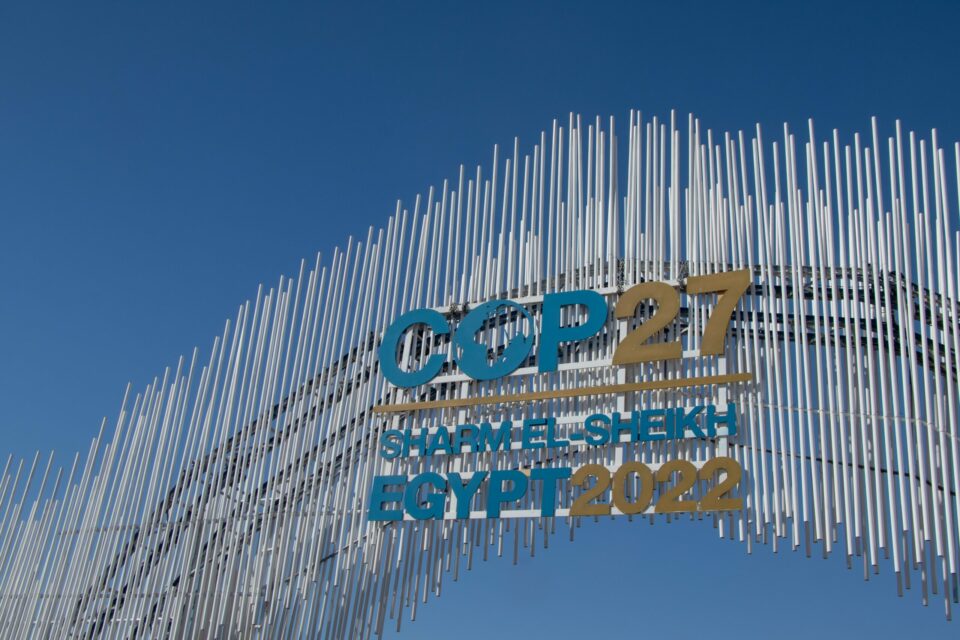
From COP27 to COP15: Is a global deal on biodiversity within reach?



